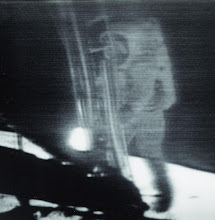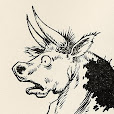


The photograph posted here brings up two issues. I guess they should be approached separately.
One, it's evidence of a remarkable practice in modern history, the assembling of human zoos. Explorers and adventurers have long returned home with living human specimens for display, as Columbus did when he took indigenous "Americans" back to Spain in 1493. One of the Medicis, a Cardinal, is supposed to have assembled a collection of people of different races, as well as animals, in the 1600s. But this practice really got into high gear in the late 19th century, with exhibitions of humans in Hamburg, Barcelona, London, Milan, New York and Paris. They were wildly popular. Nubians from Sudan, Inuit (Esquimaux) from Labrador, Samoans - it must have been astonishing for Caucasians to see these strangely different (yet similar) people. The 1889 Parisian World's Fair had over 400 indigenous people as a major attraction. As bizarre as the practice may seem by our standards, I think that these displays must have been truly marvelous, and in keeping with human curiosity. So I don't presume to judge them too harshly for what could be characterized in contemporary sensibility as exploitation. But I doubt that the onlookers learned much truth about the people they were staring at.
The second issue is related to the first, at least in the pictures I've posted here. Recently I read some disagreement about who was pictured in a photograph. One side relied on the caption on the back side of the photograph as proof of who was depicted; the other side's opinion, based on having seen other images of the person, was that the caption was wrong.
So have a look at the photograph here. It was taken at the 1889 Parisian World's Fair. On the back is a pencil inscription identifying the people shown as a "Group of Africans." I think you'll agree that at most two of them may be African. The others appear to be Asian - my guess is from Southeast Asia. Maybe their clothing and accessories are authentic; maybe they're theatrical. Maybe the person labeling the photograph was misinformed or simply careless.
I'd say whatever truth was there to be gleaned from the exhibition or the photograph, you wouldn't find it without first distrusting what you're being told or shown.





Very interesting. The display of humans from other cultures fits in very well with colonialism. To some degree, the indigenous people were the spoils of exploration. I agree entirely with your assessment of the human displays...that it must have been fascinating, yet the people observing actually gleaned relatively little about the real lives of the subjects.
ReplyDeleteP.S. I don't think any of the pictured subjects are African.
Christine
This reminds me of the time my friend Jen saw a copy of Goya's "The Third of May" in a Maryland antique store. The tag read, "Shooting of Blacks".
ReplyDeleteHey, Natalie! Good story; there you have it.
ReplyDeleteHey Robert,
ReplyDeleteThese girls are actually Javanese dancers, from the Dutch East Indies, now Indonesia.
If you search for 'java exposition 1889' you'll find more pics and info on them.
(Composer Clause Debussy was strongly influenced by the accompanying 'Gamela' music, forinstance...)
Anyway, nice blog! Cheers from The Netherlands,
D
Thanks for the great information, D. Glad you enjoy the blog. Best regards, Robert
ReplyDeletePretty much like modern Zoos today where animals are put on display, and gawked at.
ReplyDeleteI'm Indonesian, and I'm pretty sure those ladies in the pictures are Indonesian, and wearing Indonesian traditional clothes and dance attire. It's almost funny how people can just give other people wrong infos without (I assume) doing any research on it, and in this case way off. Thanks for the article.
ReplyDelete